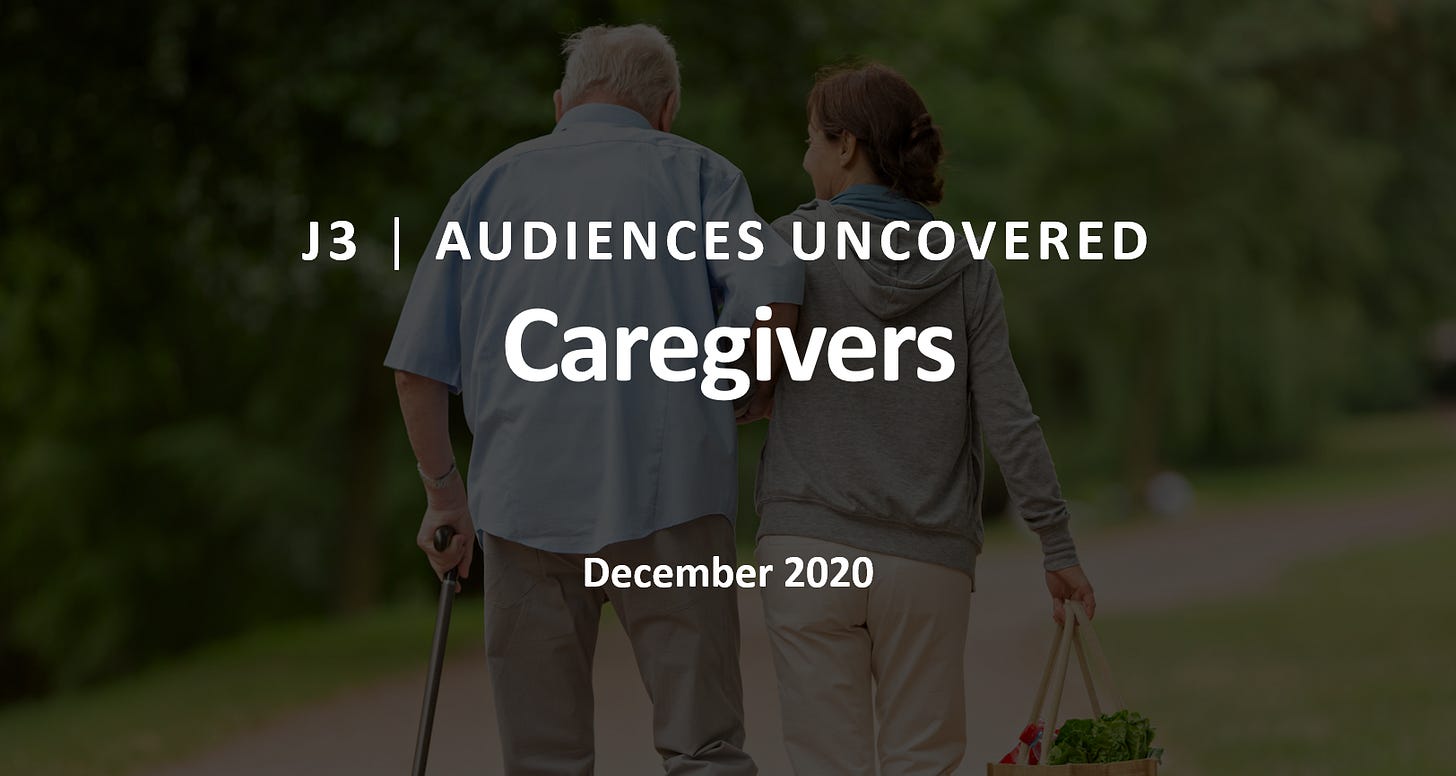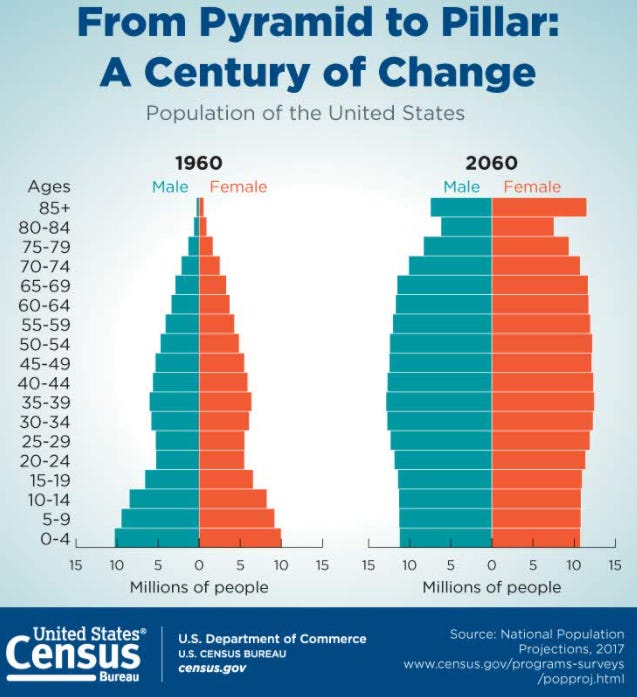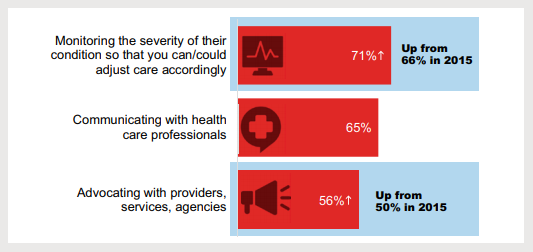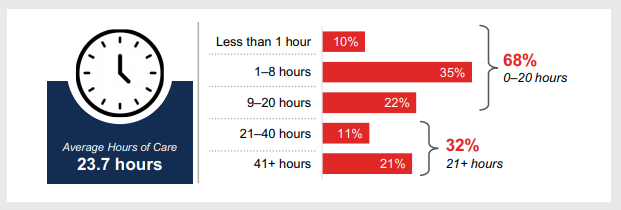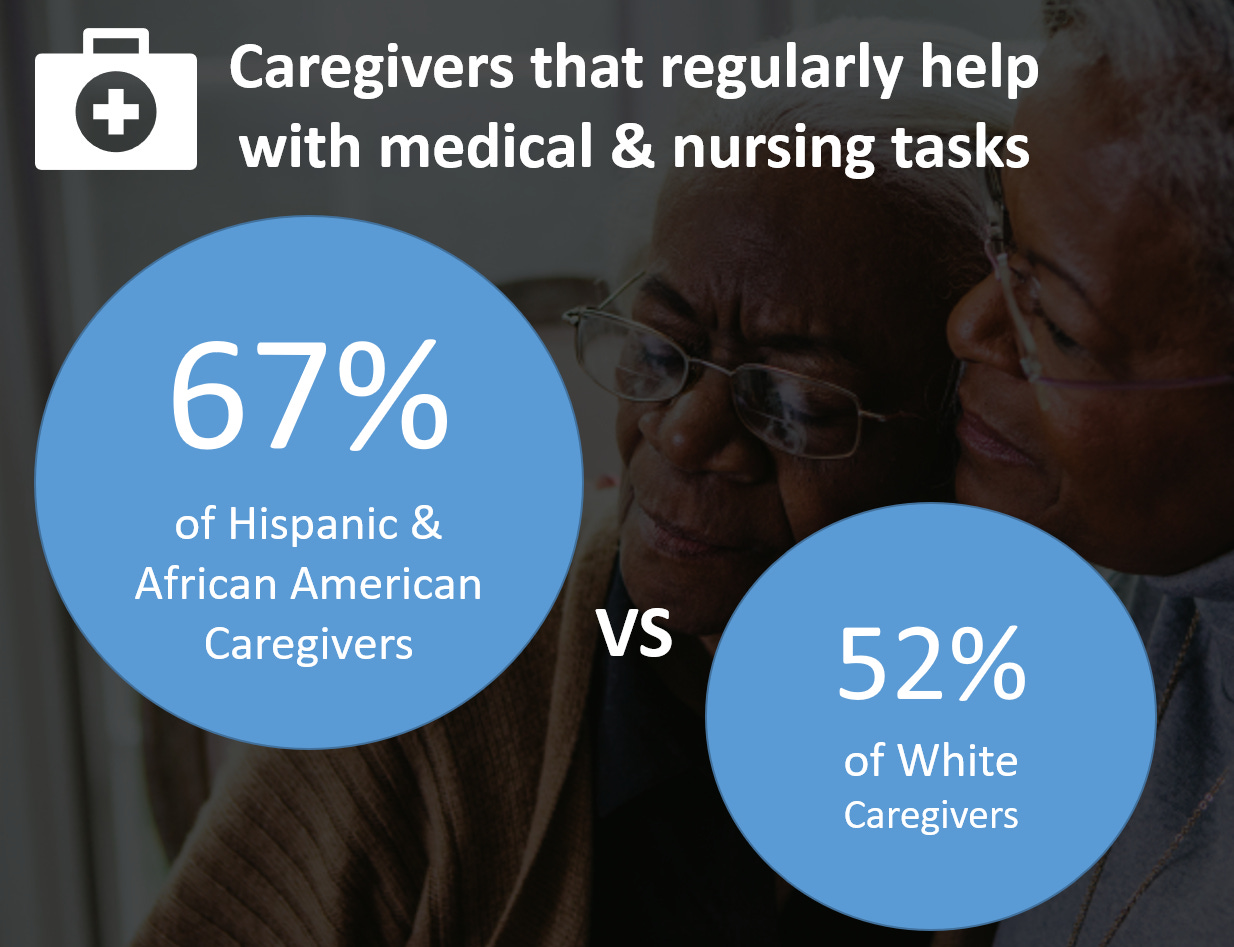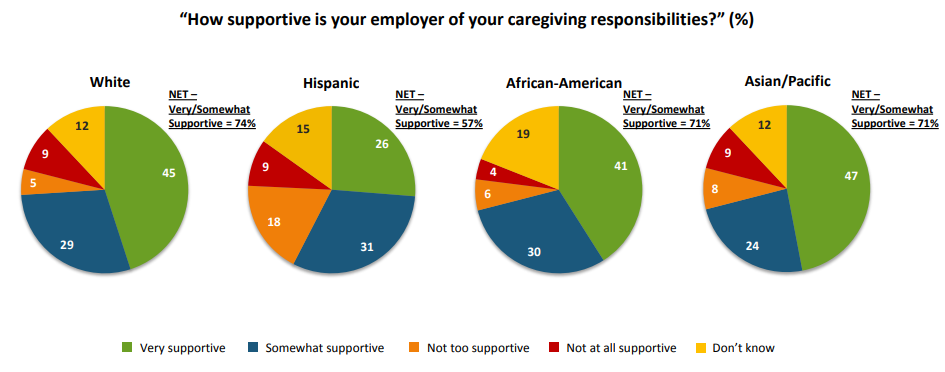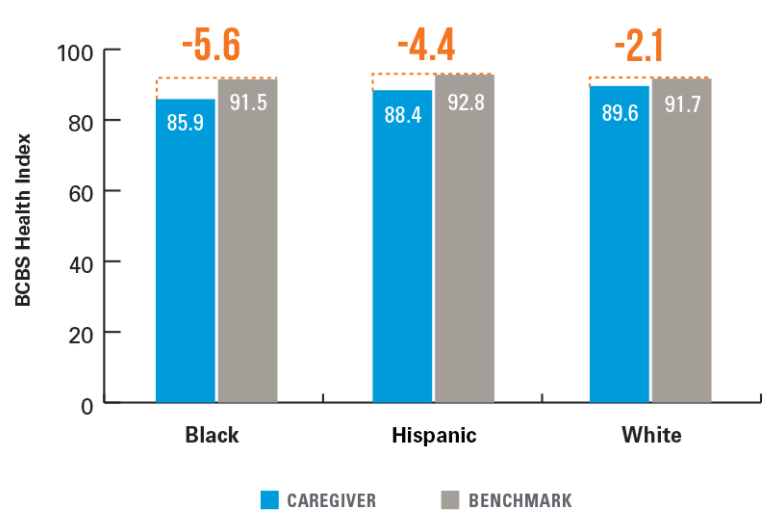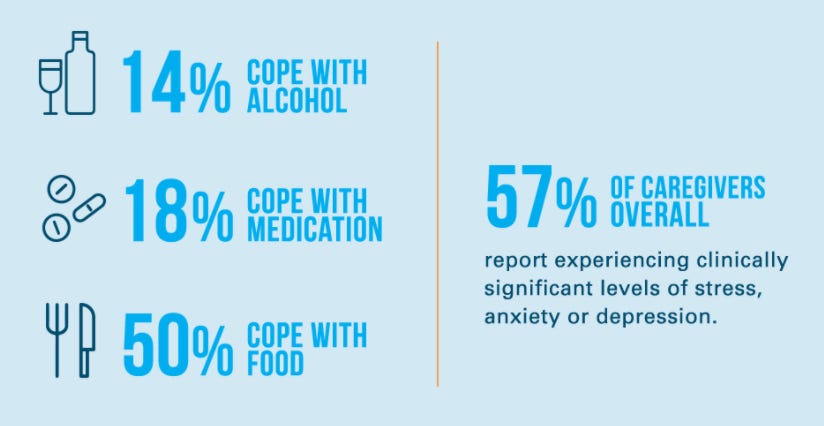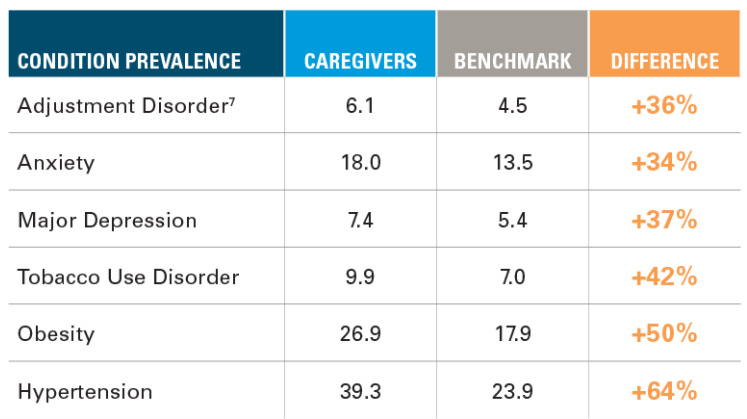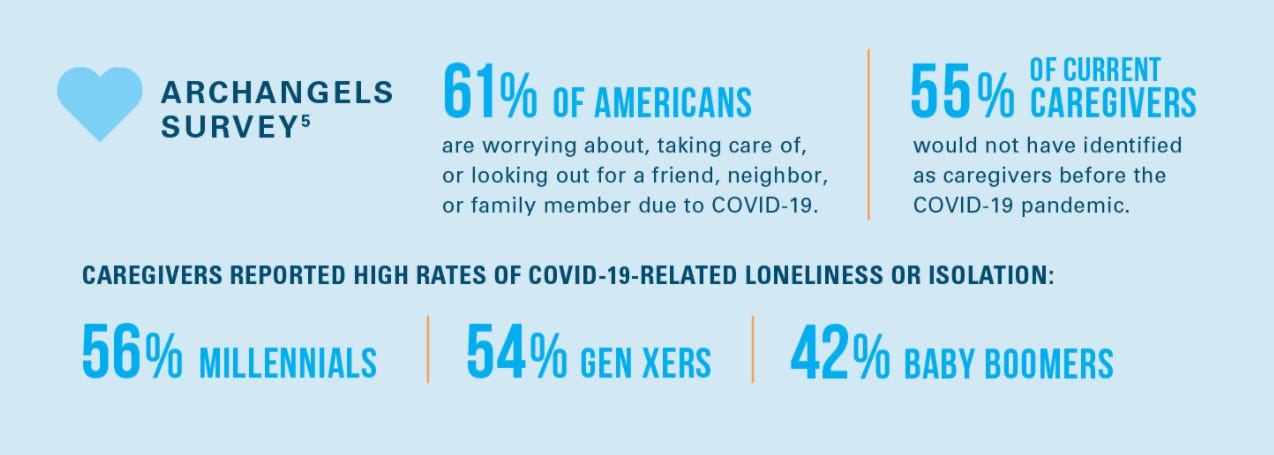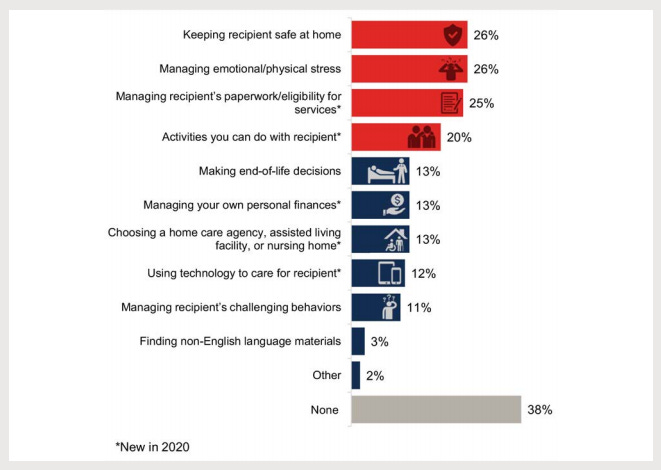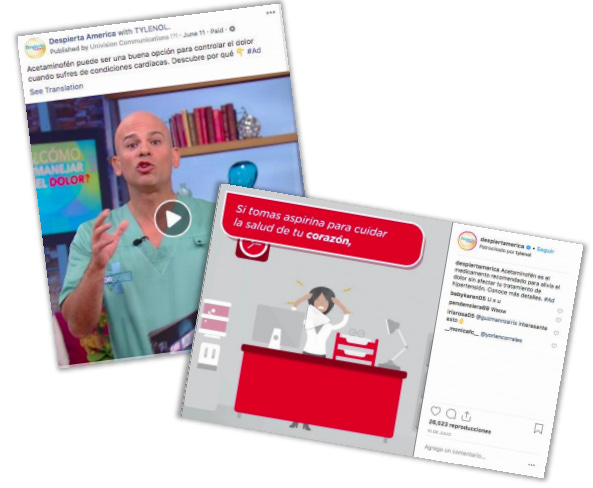Audiences Uncovered: Caregivers
Hello Everyone! As a reminder, we are LIVE on Substack, where you can find all of the past and future editions of our newsletter.
November was National Family Caregivers Month - designated to celebrate the contributions of the over 53 million Americans who provide unpaid care to their loved ones. The size and importance of this group is forecasted to increase significantly as US demographics continue to “grey” in the coming decades: By 2034, Adults 65+ are expected to outnumber Children 0-18 for the first time in US history. With 66% of Care Recipients being Adults 65+, these demographics alone mean a larger need for unpaid care.
This edition of Audiences Uncovered is ~1,300 words, approximately a 5 minute read
By the numbers
1 in 5 Americans (21.3%) have provided unpaid care to an adult or child with special needs in the past year (AARP)
24 hours: Average hours per week of care that Caregivers provide (AARP)
4.5 years: Average duration of care (National Alliance for Caregiving)
6 in 10 also have a full-time job, while only 4 in 10 have paid family leave (AARP)
45% have experienced a negative financial impact from caregiving (Transamerica)
Over Half report experiencing clinically significant levels of stress, anxiety, or depression (BlueCross BlueShield)
The Who/What/When/Where of Care
WHO:
Caregiving is largely a family business (a non-profit business as we’ll discuss later), with the vast majority providing care for a relative (89%) and most commonly an elderly parent (50%); this helps explain the roughly 20 year gap between the average age of Caregivers (CGs), 49 y/o, and Care Recipients (CRs), 69 y/o. Caring for a family member is seen by most as an obligation, and over half of CGs (53%) say they didn’t even have a choice to begin providing unpaid care. This sense of duty and the flipside sense of powerlessness likely contributes to the emotional fatigue many experience.
Given the older age of Care Recipients, it’s not surprising that they’re most often in need of care due to a long-term physical condition, but mental health and memory problems are also common, and have become more pervasive over the past 5 years.
WHAT:
On a day-to-day basis CGs are often helping with seemingly normal tasks that a CR can no longer do on their own. The most common of these Instrumental Activities of Daily Living (IADL) are chores like grocery shopping or cleaning dishes, while still notable but less common are daily condition-specific tasks like managing medication or arranging ancillary services.
In many situations, CGs are the key decision maker and point person for their CRs treatment: 2/3rds of CGs say they’re responsible for communicating with HCPs and over half help advocate with the various providers, services, and agencies - an increasingly complex task.
WHEN:
Caregiving is a full-time job for many, with over 1 in 5 saying they provide more than 40 hours of care per week. And it’s long-term, with 30% having provided care for more than 5 years.
WHERE:
Many picture a Caregiver dropping-in on their elderly parent in a Nursing Home to help provide care, but in actuality this is a rare situation: Only 7% of Care Recipients are living in a nursing home or assisted living facility. Far more common is co-habitation: 40% live in their CGs household (up from 35% in 2015), again illustrating the always-on nature of caregiving.
Multi-Cultural Caregiving
African American and Hispanic Caregivers are often taking on larger roles and consequently suffering more of the financial & health repercussions.
In terms of sheer hours spent caregiving, African American CGs provide an average of 31 hours per week - that’s 20% more than the weekly average for White CGs; Hispanics also report a higher time spent caregiving at 26 hours per week.
Adding to this inequity is the type of care, with 54% of African American CGs and 49% of Hispanics rating their care as “High Intensity” compared to 35% of White CGs. In these African American & Hispanic communities, Caregivers are more likely to be making the critical & stressful health decisions for their loved ones.
Multi-Cultural Caregivers are also less likely to receive support from their employers, especially Hispanic CGs, with only 57% saying they feel supported compared to 74% of White CGs.
In short, Multi-Cultural communities are providing more intense care for longer periods under more financial strain and receiving less employer support. It should come as no surprise that these communities also show larger health impacts compared to the general population of Caregivers (BlueCross BlueShield Health Index).
The Toll of Caregiving
As we’ve established - caregiving is always-on & all-encompassing - and many report suffering a financial or employment-related impact. 45% say they’ve suffered financial setbacks, whether they’ve had to stop saving (28%) or take on debt (23%).
When it comes to the work place, 6 in 10 say they’ve suffered a negative impact, with many having to take significant time off (53%). And over 1 in 3 say their direct supervisor isn’t even aware of their caregiving role - this reticence to share may be due to the fact that only 39% have some form of paid family leave.
All of this has health consequences for Caregivers:
And diving deeper we see a significantly increased prevalence of health disorders, including a 64% increased likelihood of hypertension:
Caregiving During COVID
COVID has not been kind to the world of caregiving: Disproportionately impacting Care Recipients as well as making the day-to-day tasks of caregiving more difficult, more dangerous, and more isolating:
A Very Necessary Silver Lining
The stresses of Caregiving can seem overwhelming, but it’s important to note the value and fulfillment most Caregivers derive from helping a loved one.
51% of all Caregivers say they were given a sense of purpose or meaning in their lives from caregiving. And though Multi-cultural communities sacrifice more, both African Americans (61%) and Hispanics (59%) were even more likely to feel this heightened sense of purpose. Caregivers aren’t looking to be pitied, but rather supported, empowered, and celebrated.
How Brands Can Help
Even experienced Caregivers don’t consider themselves health experts. They’re often forced to make critical health decisions without the relevant expertise, so searching for info & support is an always-on activity. The most common sources for helpful info are HCPs (55%) and Friends & Family (43%), but 1 in 5 CGs report having no source of help or support. And when asked about their biggest needs, there’s a long and wide-ranging list:
Over 1 in 4 CGs say they’re actively looking for help to manage their stress - Brands don’t necessarily have to reach out with technical advice, it can be as simple as recognizing their grit and providing a stress-relieving outlet (maybe a partnership with a Meditation App - Calm for Caregivers - just a thoughtstarter!).
It’s also important to note that these top needs run the gamut from the more serious - making end-of-life decisions (13%) - to the lighter side - finding fun activities (20%). There’s clearly no one right way to engage with Caregivers and any Brand (using any Brand tone) can find a way to help - and partnering with J3 Strategy & Studios is often the best place to start :)
Back in 2018, J3 Studios developed a custom campaign for Tylenol speaking to this overburdened and underserved Hispanic Caregiver population. Partnering with Univision and leveraging trusted KOLs, the Studios team created branded videos & stories posts to run across Facebook, Instagram, and Univision.com. These posts educated & empowered the Tylenol Special Conditions Consumer and their Caregiver to use acetaminophen as the safe choice for pain relief.
Providing support & advice to a Caregiving population in need of help, the 29 posts resulted in 6.7MM impressions, over 35K actions, and most notably a 34% lift in purchase intent. To explore reaching Caregivers for your brand through a J3 Studios activation, there’s no better place to start than an email to Anthony Hello.
Extra Credit Reading
Caregiving in the United States 2020 (AARP Public Policy Institute)
The Many Faces of Caregivers: A Close-Up Look at Caregiving and Its Impacts (Transamerica Institute)
The Impact of Caregiving on Mental and Physical Health (BlueCross BlueShield)
Gen-X Women Are Caught in a Generational Tug-of-War (The Atlantic)

